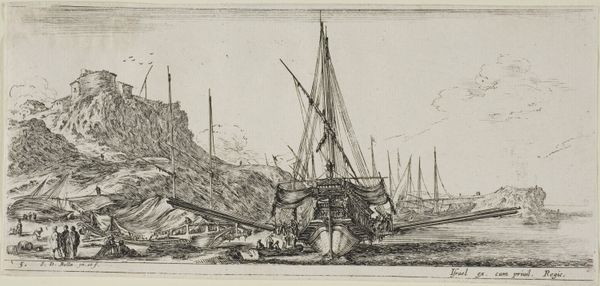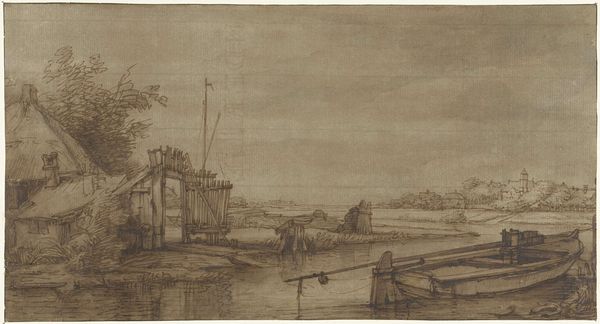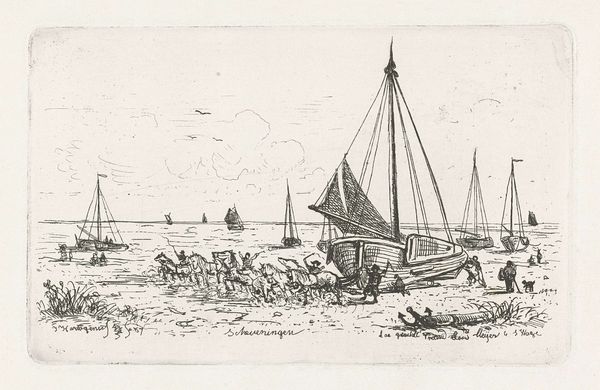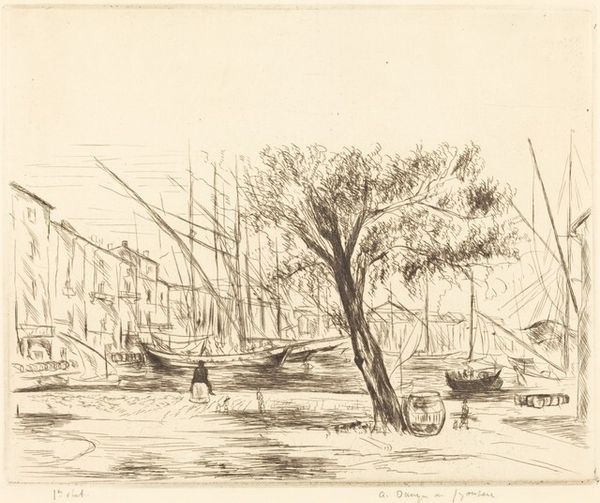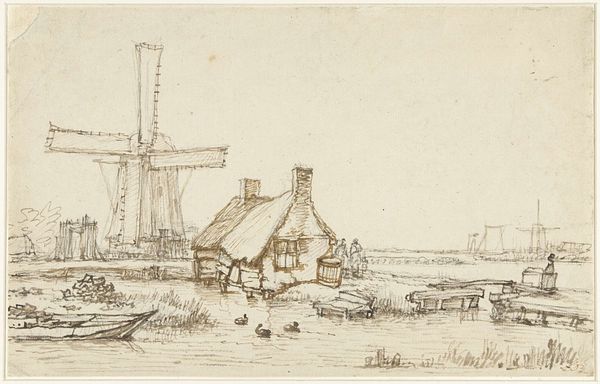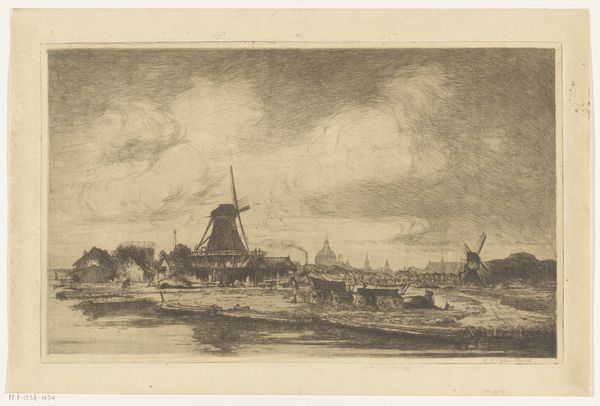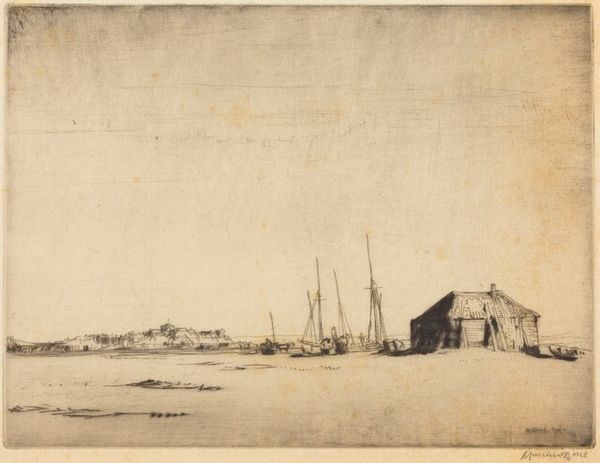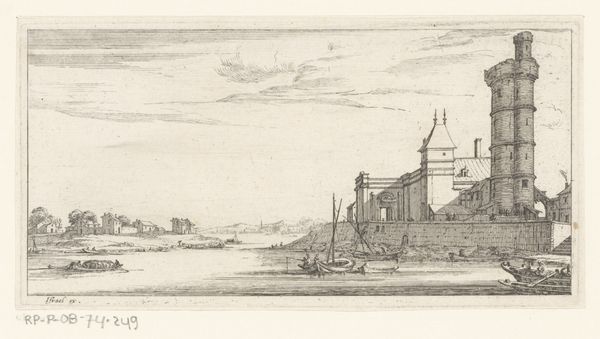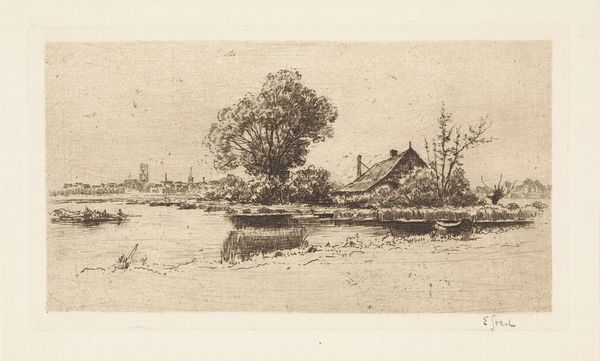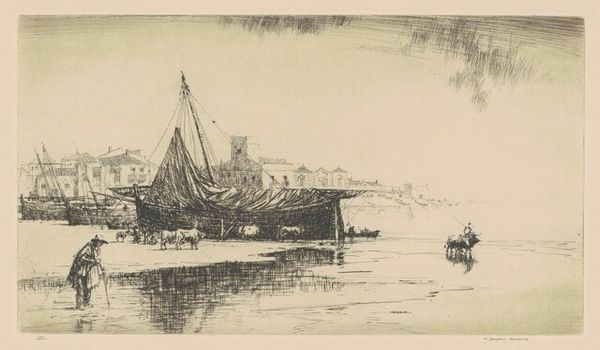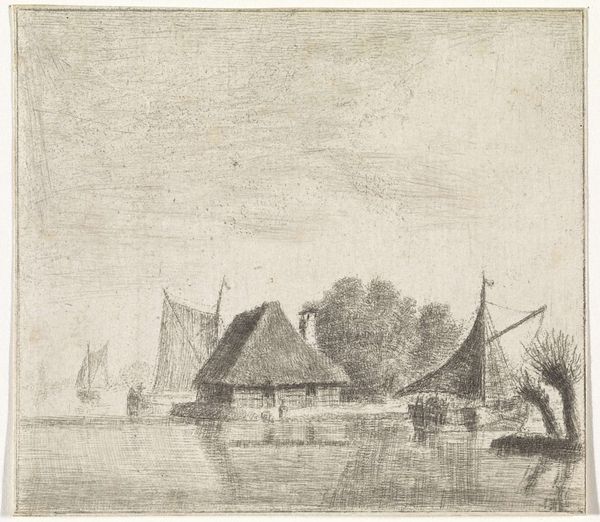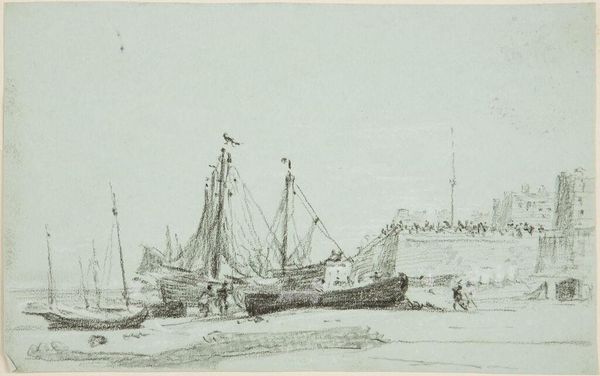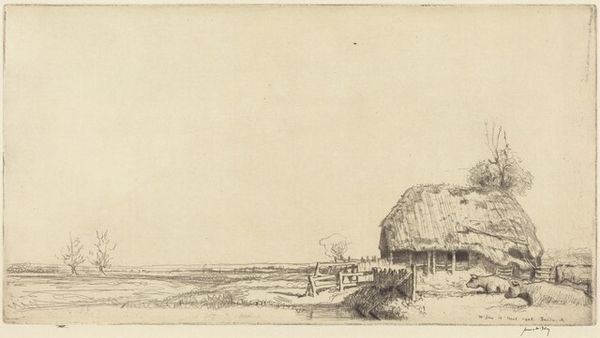
print, etching
# print
#
etching
#
pencil sketch
#
landscape
#
modernism
Dimensions: plate: 15.24 × 20.8 cm (6 × 8 3/16 in.)
Copyright: National Gallery of Art: CC0 1.0
Editor: We're looking at "Southampton, from Eling" by Muirhead Bone, created in 1903. It's an etching, and the overall impression is one of stillness and a sort of melancholic beauty in the ordinary. What catches your eye in terms of its historical context? Curator: The image speaks volumes about the changing social and economic landscape of Britain at the turn of the century. The etching aesthetic, almost like a journalistic sketch, captures a port, Southampton, grappling with modernity. You see the older structures like that thatched building alongside ship masts and a more modern port structure, but rendered as an unidealized place. How does the method used to depict the landscape impact your experience of it? Editor: I think the printmaking makes it feel distant, almost like viewing a historical document, rather than a vivid scene. It feels observational and detached. It certainly shows, but does not express. It also makes it more accessible. Is there a politics to an accessible print? Curator: Absolutely. Prints allowed wider distribution, making art less exclusive. Bone, through his choice of subject matter – the working port rather than a glamorous estate – and his medium, subtly democratized representation. His contemporaries often depicted country estates and city monuments, glorifying wealth and industrial progress. This print says something different. Who were the consumers for these prints in Edwardian England? Editor: So, Bone’s choosing of etching as a method of production becomes almost a statement about the type of art that is made accessible and to whom. Someone buying an etching probably has slightly different priorities from someone commissioning an oil painting, in terms of how they relate to society. I suppose the viewer becomes part of the narrative and shapes the historical interpretation of the work. Curator: Precisely! And remembering that changes how we interpret even seemingly simple aesthetic decisions. Bone provides a crucial view of Edwardian Britain’s social strata, doesn't he?
Comments
No comments
Be the first to comment and join the conversation on the ultimate creative platform.
